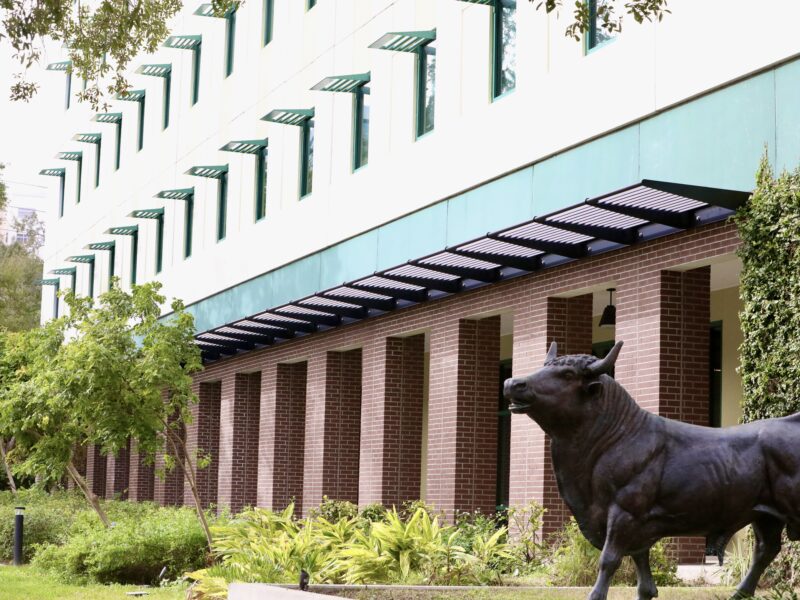
Travis Scott performs at TD Garden in Boston while touring with Kendrick Lamar in 2017. Courtesy of Kenny Sun/Flickr
By Bryce Lawson
Hip-hop artist Travis Scott and Netflix collaborated to create the documentary “Look Mom I Can Fly.” The title refers to the rise of Scott on both artistic and personal levels, as well as the trademark skydives for which his mosh-pit-filled shows are notorious..
Just like his idol, Kid Cudi, Scott started out as a Kanye West disciple. I remember first hearing of Scott back in 2013 after his production credits on Jay-Z’s “Magna Carta Holy Grail.” Scott’s head-knocking, futuristic trap bangers gave much-needed life to the trap sound.
The documentary takes place between Scott’s “Birds Eye View Tour” in 2017 and the production of his Grammy-nominated album, “Astroworld,” from last year. Throughout the film, we get a glimpse into Scott’s creative process.
Seeing the creation of one of my favorite songs from the album, “Butterfly Effect,” was a pretty inspiring thing. It’s what I’ve always assumed went into creating songs. We see the Murda Beatz-produced track go from studio to stage. As a writer, I really connected with Scott having an idea and then making it become a reality.
A big portion of the documentary focuses on Scott’s one-of-a-kind concert performances featuring him riding a roller coaster and rapping on a flying bird, which is definitely a childhood dream.
The clips of Scott’s childhood home and visit to his grandmother’s house really resonated with me. Seeing Scott’s atmospheric rise – including having a day honored after him and becoming a father – ties into the album “ASTROWORLD,” an album for Houston by a Houston native. The goal of the album was to give fans the feel of the Six Flags Astroworld theme park that closed in 2005. The songs act as different rides throughout the sonic theme park.
A small portion of the documentary shows Scott starting up his Cactus Jack label and working with his artists, Don Toliver and Sheck Wes, who is notable for his hit “Mo Bamba.” This was probably the reason for those never-ending “SICKO-MODE” and “Mo Bamba” mashups. I thought this was a great touch, showing that Scott can now stand with his contemporaries as head of his own label.
A highlight of the documentary for me was seeing Scott work with artists outside the rap genre. James Blake and Tame Impala frontman Kevin Parker contributed to the songs “SKELETONS” and “STOP TRYING TO BE GOD.”
Both gave “ASTROWORLD” a sound that separates it from regular hip-hop. I found it interesting that the majority of the big songs off the album, most notably the Drake assisted “SICKO MODE,” weren’t finished until right before the release.
The scenes of Scott losing in various Grammy categories was another nice touch because the disappointment he shows after losing out on “Album Of The Year” shows how much he cares about the craft.
Seeing Scott’s creative process that went into “ASTROWORLD” allowed me relate with him on a human level, showing that even the biggest artists face setbacks. Footage of his early concerts in front of an audience of 20 are shown side-by-side with his Super Bowl performance and give perspective to the themes of the documentary.
From his dream collaborations with Nike and Reese’s Puffs Cereal to being a great father to his daughter Stormy, Travis Scott is definitely an inspiration to me on a daily basis. His music has become a soundtrack to my life, with songs like “Biebs In The Trap” and “Way Back” transporting me back to “tearin’ it up” around the city in 2017. Documentaries like this definitely get my creative juices flowing, making this a must-see for all fans of rap and creatives alike.



